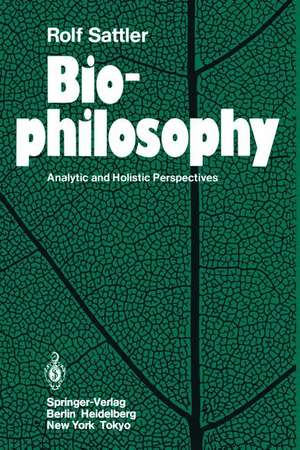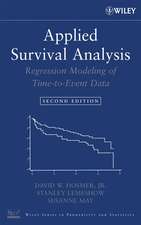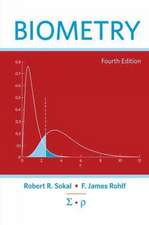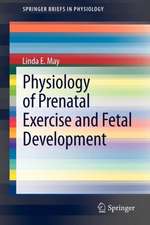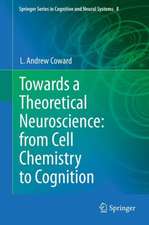Biophilosophy: Analytic and Holistic Perspectives
Autor Rolf Sattleren Limba Engleză Paperback – mai 1986
Preț: 388.72 lei
Nou
Puncte Express: 583
Preț estimativ în valută:
74.39€ • 76.85$ • 61.88£
74.39€ • 76.85$ • 61.88£
Carte tipărită la comandă
Livrare economică 19 martie-02 aprilie
Preluare comenzi: 021 569.72.76
Specificații
ISBN-13: 9783540164180
ISBN-10: 3540164189
Pagini: 304
Ilustrații: XVI, 284 p. 4 illus.
Dimensiuni: 155 x 235 x 16 mm
Greutate: 0.43 kg
Editura: Springer Berlin, Heidelberg
Colecția Springer
Locul publicării:Berlin, Heidelberg, Germany
ISBN-10: 3540164189
Pagini: 304
Ilustrații: XVI, 284 p. 4 illus.
Dimensiuni: 155 x 235 x 16 mm
Greutate: 0.43 kg
Editura: Springer Berlin, Heidelberg
Colecția Springer
Locul publicării:Berlin, Heidelberg, Germany
Public țintă
ResearchCuprins
- On the importance of Biophilosophy; Definitions.- 1 Theories and Hypotheses.- 1.1 Introduction - Questions and problems.- 1.2 The Aim of Science - General and singular propositions. Theories, laws, rules, hypotheses, auxiliary hypotheses, ad hoc hypotheses, working hypotheses, models, facts.- 1.3 Scientific Methodology or How We Gain Scientific Knowledge.- 1.3.1 General Considerations - Importance of methodology. Laboratory methodology.- 1.3.2 Induction and the Hypothetico-deductive Method.- 1.3.3 Validation of Hypotheses, or: Is Certainty Attainable?.- 1.3.3.1 The First Postulate of Validation - Hypotheses may be proved (justificationism). Criticism.- 1.3.3.2 The Second Postulate of Validation - Hypotheses cannot be proved, but may be disproved (falsified) (falsificationism). Criticism.- 1.3.3.3 The Third Postulate of Validation - Hypotheses can neither be proved, nor disproved; they may only be either confirmed or disconfirmed. Internal and external factors of science.- 1.3.4 A Systems Model of Scientific Methodology (Laszlo’s Model) - Empirical input, ideals (values) of science, and the relation of resistance factors to innovation. Irrationally in science. Demarcation of science.- 1.4 Is Scientific Progress Possible? - Incommensurability. Progress within paradigms. Coexistence of schools of thought. Unity of science. Complementarity and perspectivism.- 1.5 The Semantic View of Theories.- 1.6 Conclusions.- 1.7 Summary.- 2 Laws, Explanation, Prediction, and Understanding.- 2.1 Laws - Definition. Deterministic and probalistic laws. Accidental generalizations. Process and coexistence laws. Law and order versus chaos: is nature lawful?.- 2.2 Explanation - Two basic requirements for scientific explanation. Deductive-nomological explanation. Probabilistic explanation.Covering-law model of explanation versus narrative explanation. Other notions of explanation.- 2.3 Prediction - Characterization. Comparison of prediction and explanation. Predictive power and its limitations.- 2.4 Understanding - Understanding and explanation.- 2.5 Summary.- 3 Facts.- 3.1 Introduction - Facts as singular propositions.- 3.2 First Definition of ‘Fact’ : A proposition of a real particularity. Criticism of naive realism.- 3.3 Second Definition of ‘Fact’ : A proposition of an objective datum of perception. Perceiving and sensing. Primary realm. Culture- and theory-dependence of facts.- 3.4 Objectivity - Two definitions. Relativity and culture-dependence of objectivity. States of consciousness.- 3.5 Facts and Reality - ‘Datum’ (‘donné’),‘observation’, ‘factum’ (‘fait’; ‘Tatsache’). Absolute and moderate relativism. Criticism of absolute relativism. Patterned continuum.- 3.6 Experience - Perceiving, sensing, and experience as being (Zen).- 3.7 Summary.- 4 Concepts and Classification.- 4.1 Concepts.- 4.1.1 Introduction - Concepts as abstractions. Abstraction as selection. Examples.- 4.1.2 Nominalism Versus Realism - Controversy over universals.- 4.1.3 Degree of Adequacy of Concepts - Woodger’s map analogy. Restriction of map analogy. Examples. Complementarity.- 4.1.4 Limits of Concepts - Intension and extension of concepts. Meaninglessness. Example.- 4.1.5 Classification of Concepts - Qualitative, comparative, and quantitative concepts. Individual, class, relation, and quantitative concepts.- 4.1.6 Term, Concept, and Reality - Three level scheme.- 4.1.7 Definition - Importance of definition. Primitive terms.- 4.1.8 Operationism - Advantages and disadvantages.- 4.1.9 Are There Biological Kinds of Concepts? - Historical,functional, and polytypic (= polythetic) concepts. Significance of polytypic concepts. Fuzzy sets. Injunction. Types as injunctions.- 4.1.10 Fundamental Conclusions and Consequences - Fragmentation and wholeness (unity).- 4.2 Classification.- 4.2.1 Classes - Definitions of taxonomy and systematics. Class concepts. Species concepts. The biological species as an individual.- 4.2.2 Systems of Classification - Three steps in the construction of systems. Sameness. Qualitative, comparative (= semiquantitative) and quantitative homology. Weighting of characters. Phenetic versus phylogenetic systems. Are there natural systems? Complementarity. Hierarchical systems versus nets. Classifying versus ordering. Social and existential relevancy of classification and order.- 4.3 Summary.- 5 Comparative Plant Morphology: A Biophilosophical Case Study - An illustration and discussion of the major concepts dealt with in Chapters 1 to 4.- 6 Causality, Determinism, and Free Will.- 6.1 Causality.- 6.1.1 Introduction - Controversy over causality. Plato, Aristotle, Hume, Kant, Comte, Russell, Wittgentein, Collingwood, and Bunge on causality.- 6.1.2 Linear Causality - Causal chains, simple and branched (= hierarchical).- 6.1.3 Circular Causality - Feedback loops.- 6.1.4 Network Causality - Linear and circular causality as special cases of network causality. Network thinking. Wholeness.- 6.1.5 Mohr’s Model of Factor Analysis - Relation of causal analysis and factor analysis. Examples.- 6.1.6 Consequences of Network Thinking - Integration and systems thinking in science, society and our personal life. Relation of “cause” and “guilt”. Fire-walkers and kavadi bearers.- 6.1.7 Network Thinking in Medicine - Cancer; Myopia.- 6.2 Causalism - Two formulations of the principle of causality.Spontaneity and chance.- 6.3 Determinism - Definition. Indeterminism s. str. Methodological and ontological interpretations of Heisenberg’s uncertainty principle. Determinism s. lat. Four types of determination. Indeterminism s. lat. Order and chaos.- 6.4 Free Will - Rejection of free will. Defense of free will through scientific argumentation or existential experience (Jaspers).- 6.5 Beyond Free Will - Schrödinger’s mystical solution of the apparent contradiction between determination and the experience of free will.- 6.6 Summary.- 7 Teleology.- 7.1 Introduction - Purpose and function. Semantic confusion and complexity of phenomena.- 7.2 Terminology - Four definitions of teleology. Teleonomy. External and internal teleology. Teleology of unique events. Purposiveness. Six definitions of function. Adapted systems. Finality.- 7.3 Goal-intendedness - Mohr’s model of human teleology. Relaxations of Mohr’s model applied to animals and plants. Degrees of consciousness. Do plants have emotions and consciousness?.- 7.4 Goal-directedness - Genetic “programs” are open. Cybernetics and its application to ontogeny and phylogeny. Integration.- 7.5 Function - Two meanings of function and their consequences: function as necessary for survival, and function as any activity that relates to the system. Functionality as complementary to causality. Network functionality and network causality. Linear functionality and linear causality. Can functional statements be reduced to causal ones? Integration and function.- 7.6 Teleology and Reality - Adequacy of teleological and teleonomic concepts. No ends and no purpose in nature. Functions as an aspect of nature, but not inherently natural. No-purpose. Going nowhere.- 7.7 Summary.- 8 Evolution and Change.- 8.1 Introduction - Basickinds of questions in biology.- 8.2 Universality of Change - Everything flows. Slow and rapid changes. Catastrophes. Change of laws. Dynamism in other cultures.- 8.3 Historicity - Problems of historical science: prediction, explanation, and uniqueness.- 8.4 Evolution and Progress - Definitions of “evolution” and “progress”. Criticism of the idea of general progress and superiority.- 8.5 Modern Evolutionary Theory.- 8.5.1 Three Aspects of Evolutionary Theory.- 8.5.2 Chance and Necessity - External and internal selection. Systems theory of evolution.- 8.5.3 The Status of Evolutionary Theory and Tautology.- 8.6 Evolutionary Epistemology - Seven problems and Riedl’s solutions. Criticism of Riedl’s assumptions, postulates, and basic concepts. Merits of evolutionary epistemology.- 8.7 Evolutionary Theory and Human Values - Feedback between science and human values. Values underlying Darwinism, neo-Darwinism, and sociobiology. Alternative values. Pluralism. Deconstruction.- 8.8 Summary.- 9 What is Life?.- 9.1 Introduction - Ways of defining life.- 9.2 Vitalism - Animism. Vital principle. H. Driesch. Four criticism of vitalism.- 9.3 Mechanism - Four meanings of mechanism.- 9.4 Reductionism - Two kinds of mechanism in reductionist terms. Three kinds of reduction: ontological, epistemological and methodological. Emergence. No-thingness. Derivability and connectability. Replacement instead of reduction. Perspectivism. Compositionism.- 9.5 Machine Theory of Life - Two meanings. The computational metaphor.- 9.6 Organicism - Organizing relations. Directiveness. Historicity. Autonomy of biological theory.- 9.7 What is Life? - Monotypic, polytypic, and “fuzzy” definitions. Limitations of definitions. Life as direct experience. Oneness.- 9.8 The Mind-Body Problem -Statement of the problem. Several different approaches.- 9.9 Summary.- 10 World Hypotheses (World Views) and Truth.- 10.1 Introduction - The relevance of world hypotheses (world views).- 10.2 Pepper’s Seven World Hypotheses.- 10.2.1 Formism.- 10.2.2 Mechanism.- 10.2.3 Contextualism.- 10.2.4 Organicism.- 10.2.5 Modern Biology in Relation to the Above Four World Hypotheses.- 10.2.6 The Generating-substance Hypothesis.- 10.2.7 Animism.- 10.2.8 Mysticism.- 10.3 Truth.- 10.4 Summary.- Epilogue: On the Importance of Living.- References.
